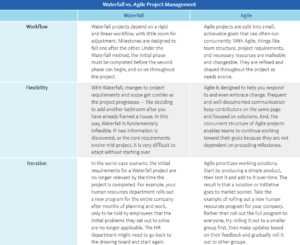Ryan Brassey, CFA
Insurance Solutions Specialist
Ryan Brassey has been with Clearwater since 2010, working primarily with insurers to identify their investment accounting and reporting needs. He has deep knowledge of how to improve processes and works with teams to ensure they receive the highest quality investment accounting and reporting available.
Ryan has a bachelor’s in economics and business leadership from the University of Puget Sound and is a CFA charterholder.
Ryan spends his free time with his wife and three children. He and his wife enjoy sharing their hobbies and passions as a family, especially skiing and tennis.
Think of your latest project at work. What went well? What roadblocks did you encounter?
More importantly, would you manage the project differently if you did it again?
Everyone has had that project where everything seemed to change or fall apart, and they had to scramble to finish it in a timely and productive manner. Plans, however well laid, always seem to want to go awry. A deadline gets missed, someone leaves the company and their workload falls on someone else, upper management tells you to take the project in a different direction, another project suddenly becomes more important, the list goes on.
When disruptions happen, you rely on your current project management structure to help you work through these changes and carry the project to completion. However, the traditional, sequential style of project management — often called Waterfall — is hardly adaptable.
If any of what I’ve just said sounds familiar to you, perhaps you should consider Agile.
What is Agile?
Agile is an iterative approach to project management which evolved out of software development and is now embraced by many other professions and industries. Agile is gaining popularity because it encourages prioritization and flexible response to change. In Agile, teams collaborate with each other and stakeholders before, during, and after a project They are self-organized and cross-functional, with the freedom to solve issues on their own. In setting an Agile team loose to do its work, senior leadership can focus on setting the broader, strategic vision for their organization.
At Clearwater, Agile project management principles run deep, to the core of who are and how we operate in our software development, client servicing, marketing, IT, and product management teams. The goal of the Agile iterative framework is to ensure required changes are recognized as soon as possible, and working solutions are delivered with fewer delays.
Most of all, Agile encourages innovation, something many companies seek as they jostle for prominence in competitive markets. Because of this, we increasingly see Agile used at organizations that do not develop software.
Comparing Agile to Waterfall
When software development was in its early days, there was no recognized alternative project management methodology to Waterfall. That was a problem, because software development is different from other industrial or corporate processes.
It was considered innovative for Henry Ford to put assembly lines in his automobile factories, a Waterfall-like process of building something piece by piece. With the dawn of the software age, it became apparent that a different approach was needed. Software is like a spiderweb, building on itself and growing simultaneously in every direction. Furthermore, the cost to change a piece of code is typically much less than to scrap the system and rebuild it.
And so, Agile was developed to promote iteration and incremental improvement throughout a software build project.
(For more information about the birth of Agile project management, see this piece from The Atlantic.) Not every project is adaptable to Agile, but Agile can be suited for more situations than you might think. Consider again your latest project. If it were run with Agile principles, how might it have differed from Waterfall? Use the following table to compare:
Consider Agile
Though its home is software development, Agile is embraced by other industries for its flexible and innovative nature. Agile project management is core to Clearwater’s approach to building software, servicing clients, planning and executing key initiatives, and working in all regards for our clients’ ongoing success. We are Agile because it helps us innovate, move quickly, and stay well ahead of evolving industry challenges.
